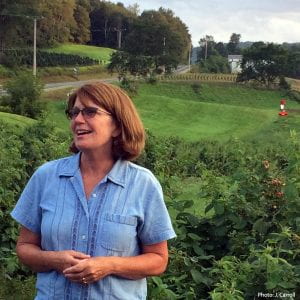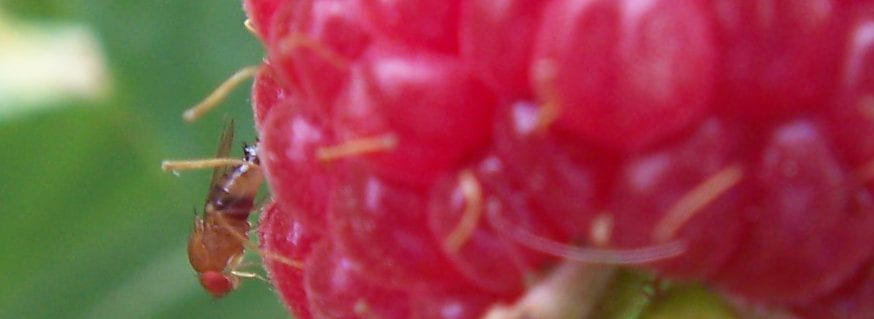Sustained catch in Monroe County marks the end of 2020 SWD monitoring. Please join me in thanking all who contribute to this effort! In the blueberry planting in Monroe County, Janet van Zoeren, CCE Lake Ontario Fruit Program, caught 11 SWD in the week ending July 28 (2 males and 9 females).
You know what you need to do to keep your fruit healthy and free of infestation! If you need a refresher, review the information on the Cornell Fruit Resources SWD management web page, fruit.cornell.edu/spottedwing/management/, and learn more about SWD's life cycle to better understand how infestations, once started, can ramp up on the Cornell Fruit Resources SWD biology and life cycle web page, fruit.cornell.edu/spottedwing/biology-and-life-cycle/. Now, on to thanking everyone!
New people
These Cornell University scientists participated in SWD monitoring for the first time this year. A special thanks go out to them for braving COVID-19 and keeping themselves and our growers safe — setting traps, changing lures, servicing traps, and identifying SWD. Plus, dealing with gentle reminders to enter data online or send in first trap catch info so that you, our readers, were kept informed via the blogs and distribution map. Thank you SWD first years!
- Ariel Kirk, Steuben County CCE
- Barb Neal, Tioga County CCE
- Grace Marshall, NYS IPM Program
- Janet van Zoeren, Lake Ontario Fruit Program
- Liz Alexander, Chemung County CCE
- Lydia Brown, Hudson Valley Research Laboratory
- Sarah Tobin, Eastern NY Commercial Horticulture Program
Regular contributors
These Cornell scientists have been the foundation of our monitoring network! This network would not be possible without their support and contributions — suggestions for improvement, ideas for mapping, perspectives on grower needs and steadfast cooperation. Yes, they've done the trapping and dealt with the gentle reminders and they're still with the program. Thank you SWD trappers!
- Andy Galimberti, Eastern NY Commercial Hort Program
- Dave Thorp, Livingston County CCE
- Don Gasiewicz, Wyoming County CCE
- Elisabeth Hodgdon, Eastern NY Commercial Hort Program
- Faruque Zaman, Suffolk County CCE
- Jim O'Connell, Ulster County CCE
- Liz Tee, Lake Ontario Fruit Program
- Natasha Field, Eastern NY Commercial Hort Program
- Peter Jentsch, Hudson Valley Research Laboratory
- Sharon Bachman, Erie County CCE
Special thanks go to Laura McDermott!

Laura McDermott, Eastern NY Commercial Horticulture Program (ENYCHP), has gone above and beyond to support the SWD monitoring network from its inception in 2013 by building a strong collaboration in Eastern NY with a goal of having a trapping location in every county in the ENYCHP. This year, 9 of 17 counties in ENYCHP participated in SWD monitoring. I know Laura would say she couldn't do this without the willing collaboration of her colleagues in the ENYCHP, in Ulster County CCE, and in the Hudson Valley Research Lab. But, we know that without her efforts in bringing us all together, SWD monitoring in Eastern NY wouldn't be as comprehensive as it is. Thank you Laura!












